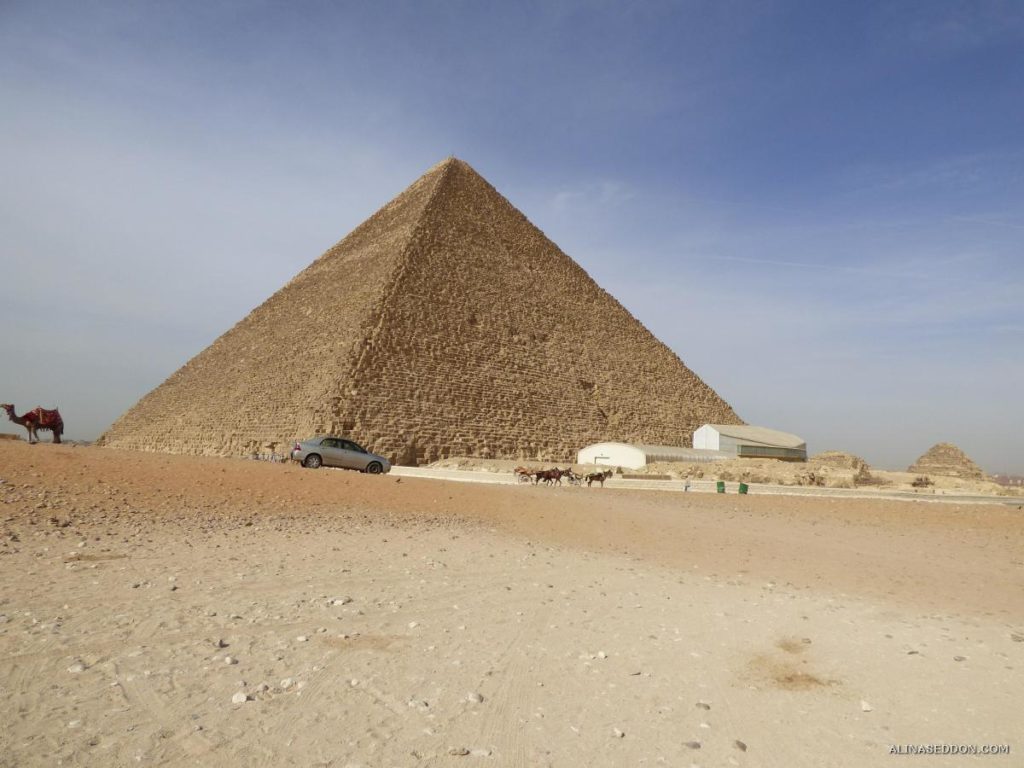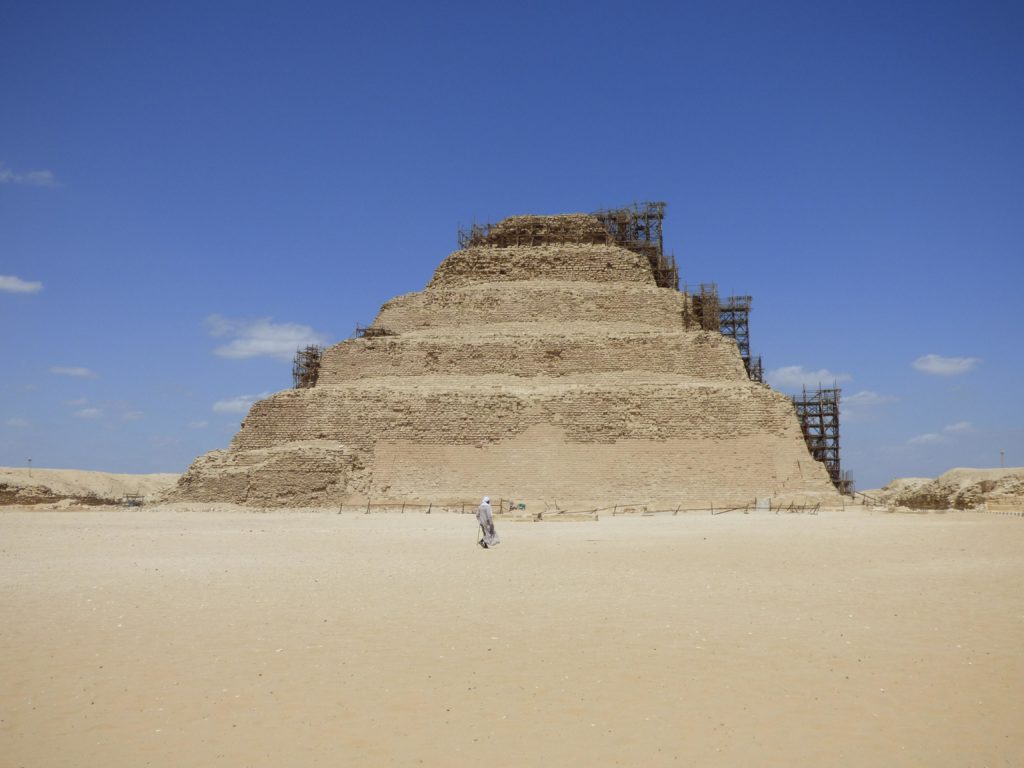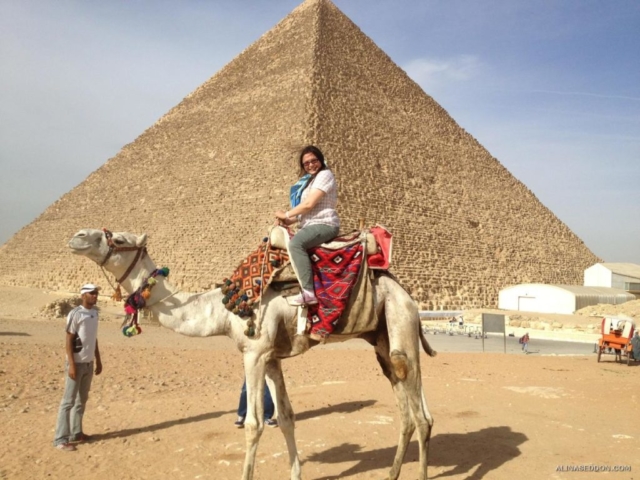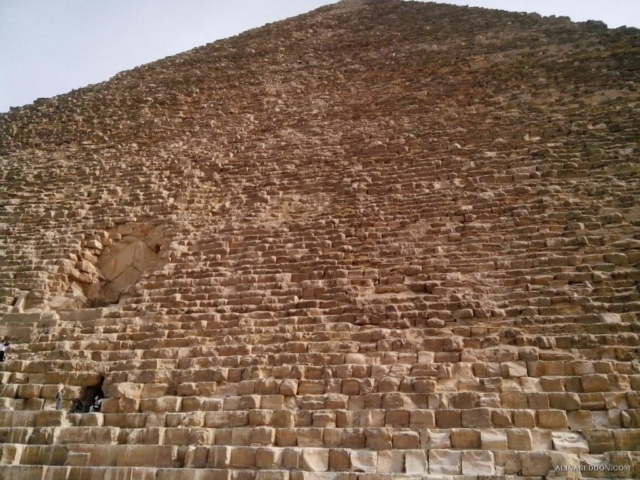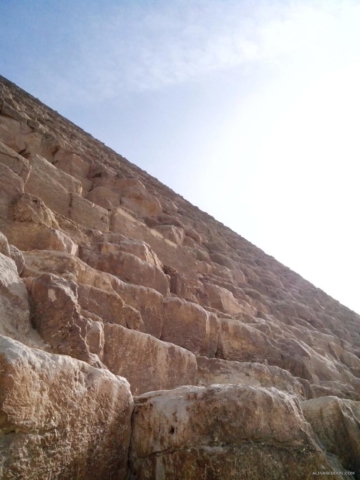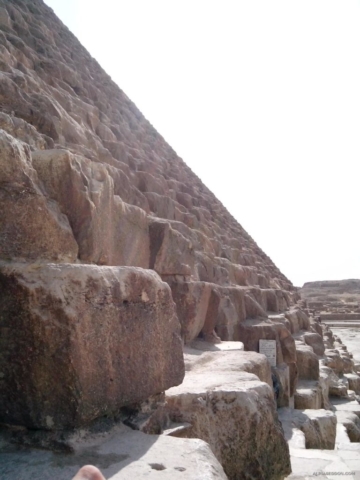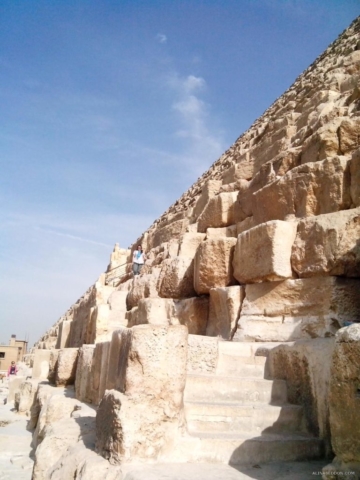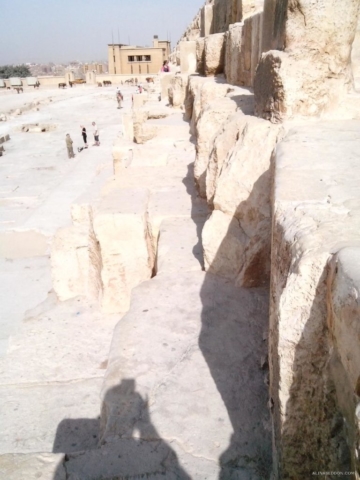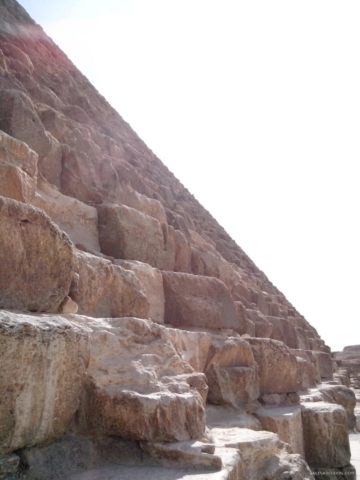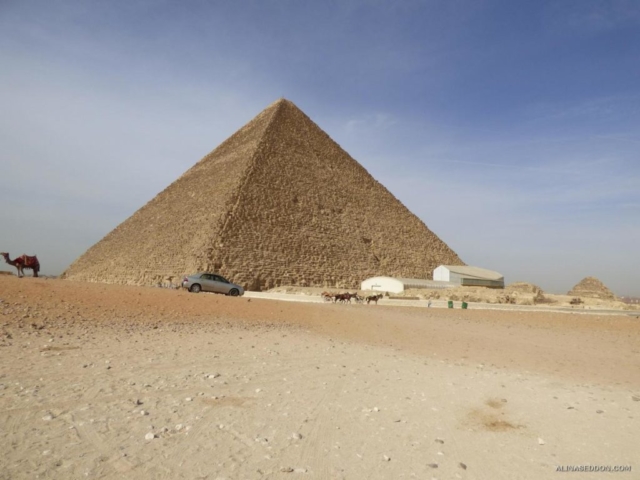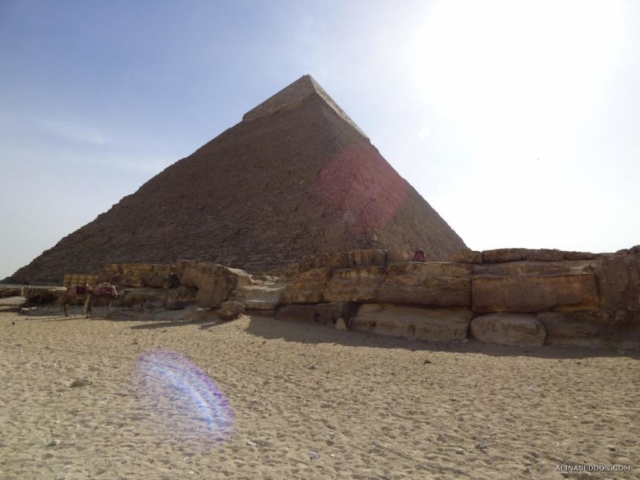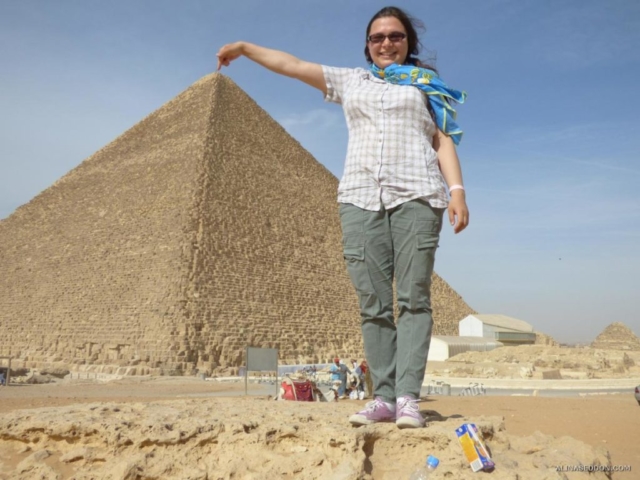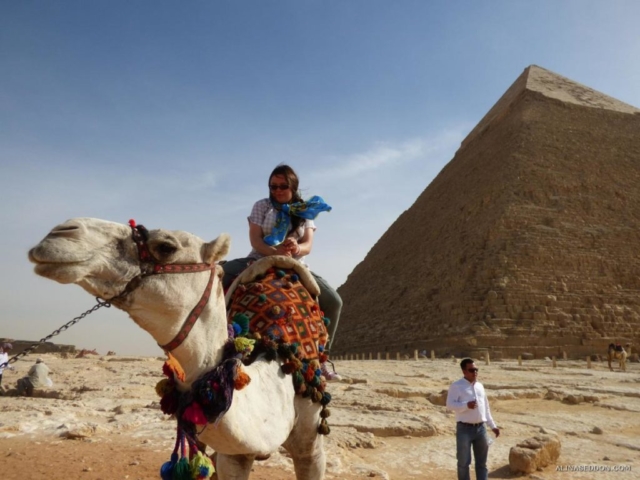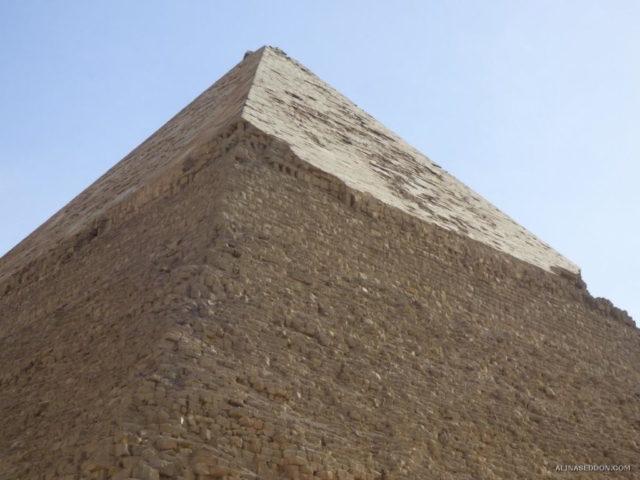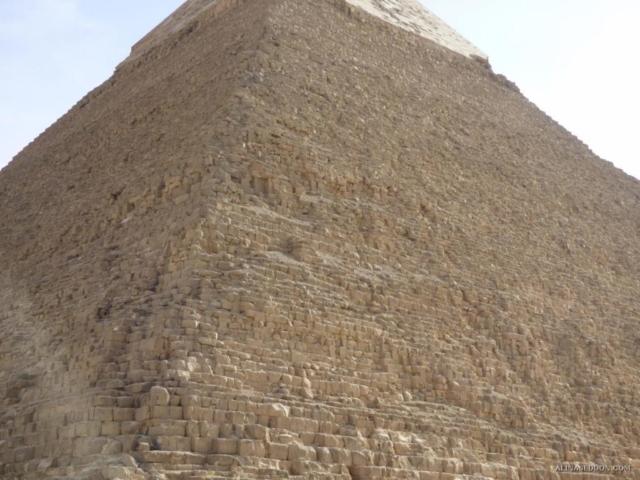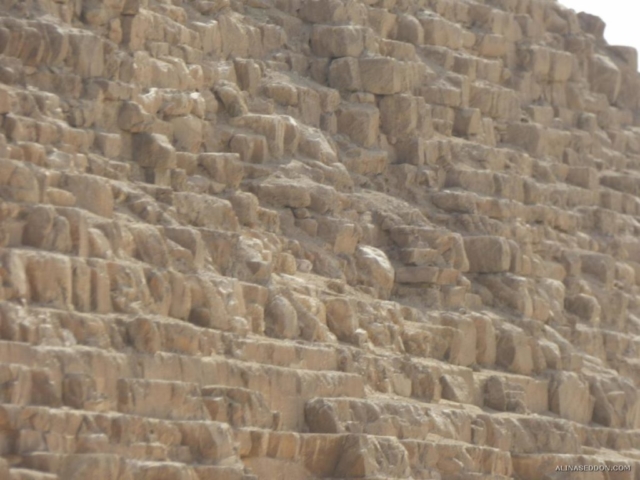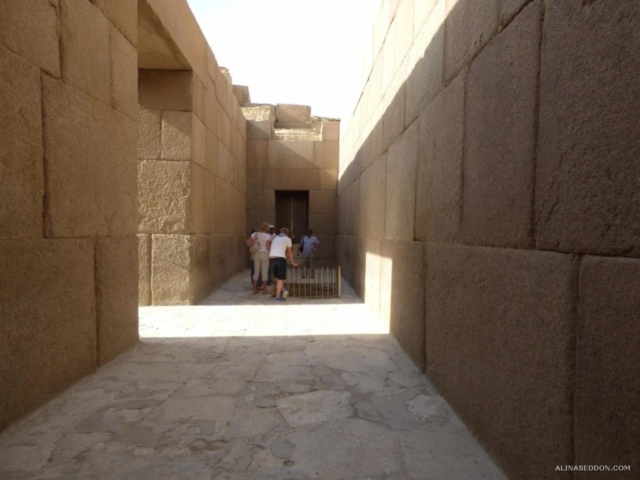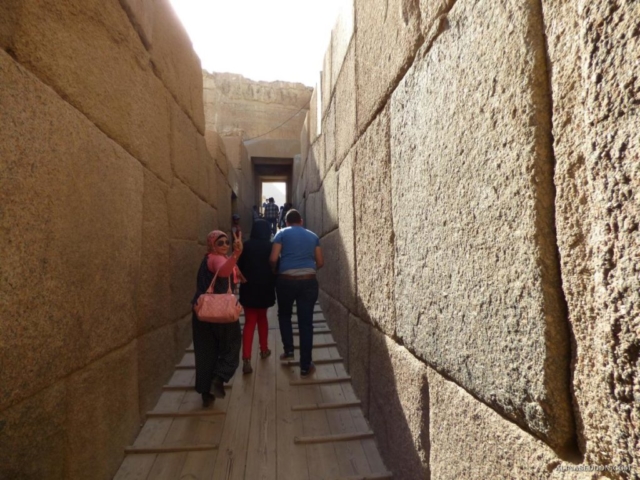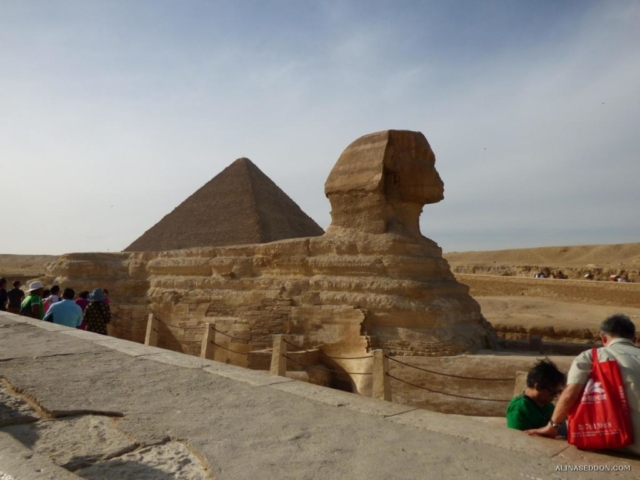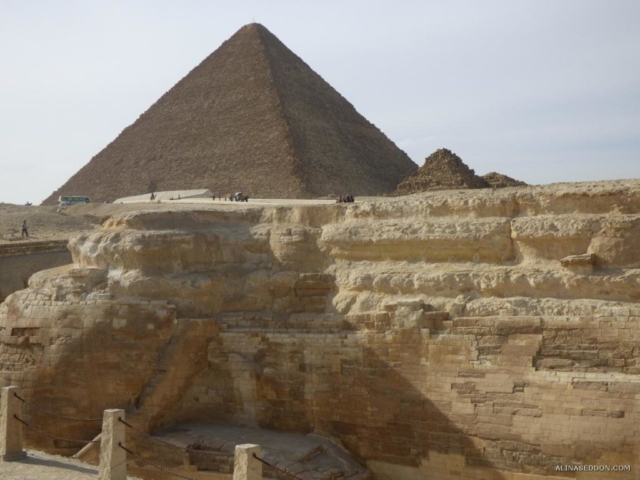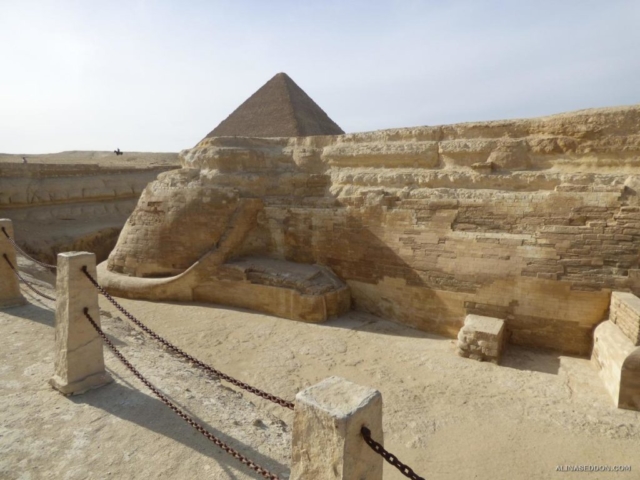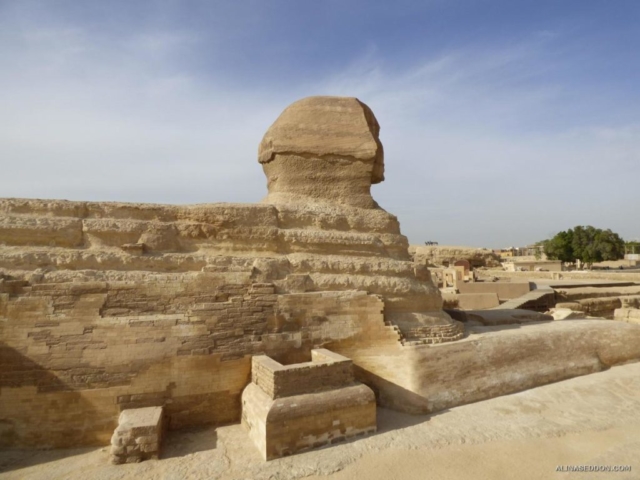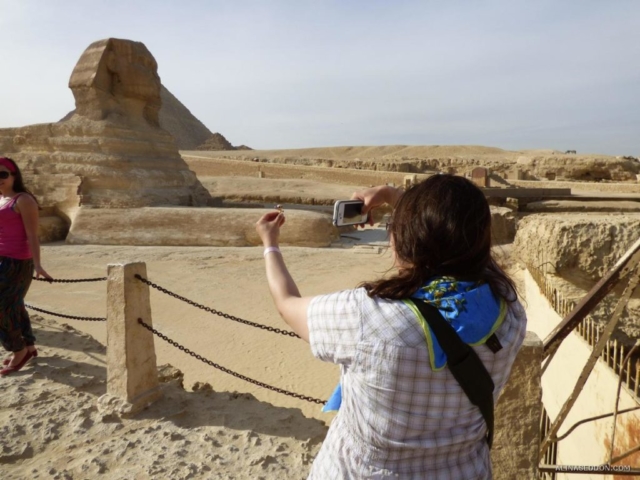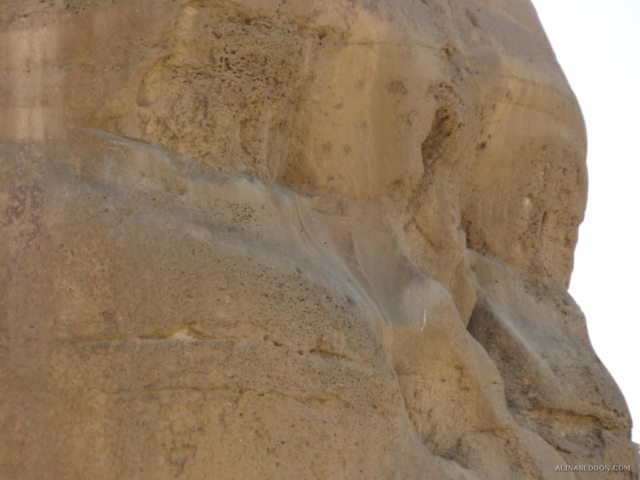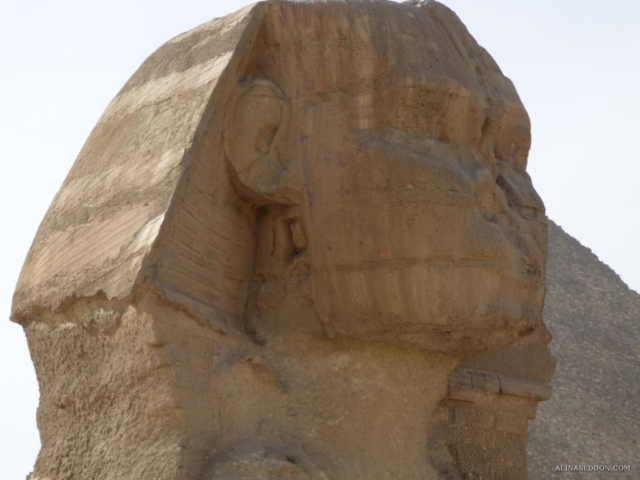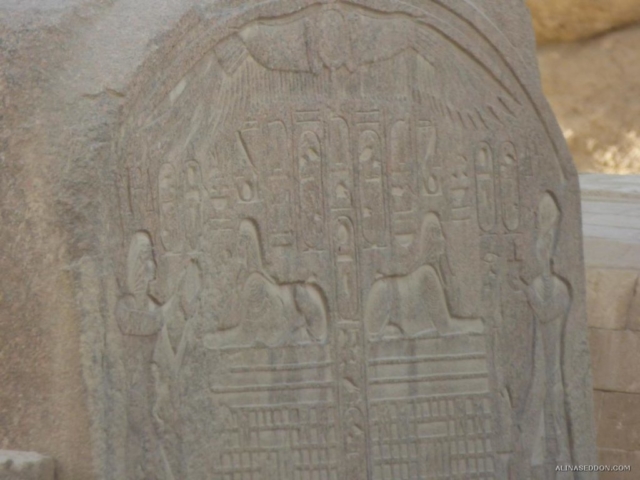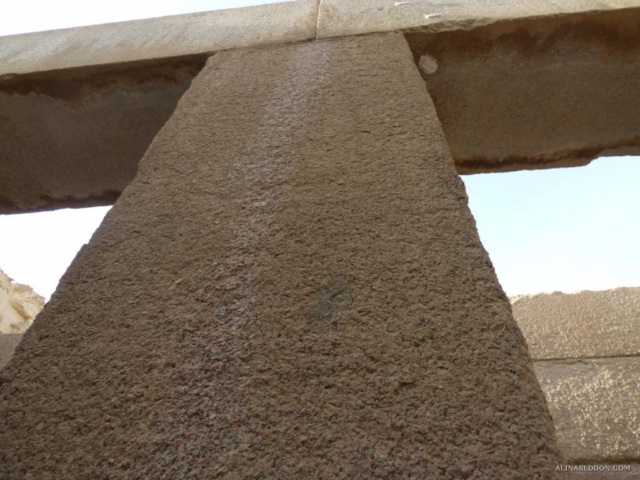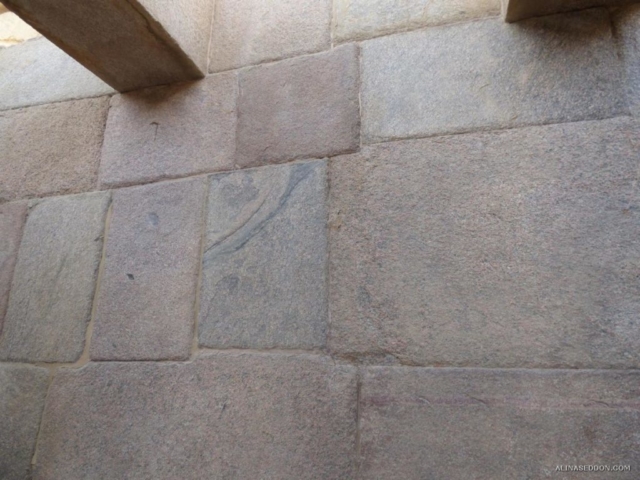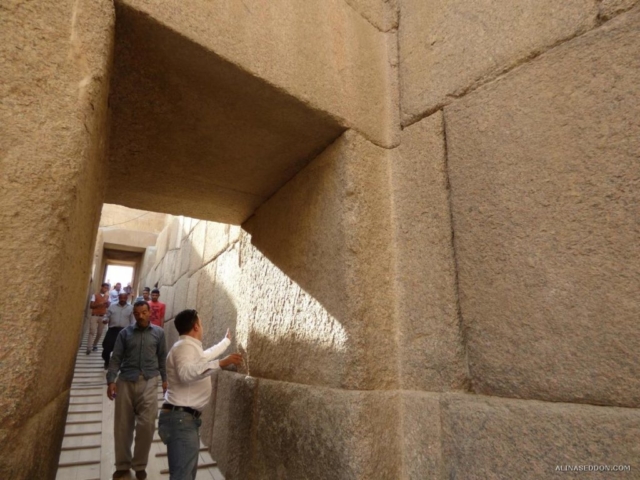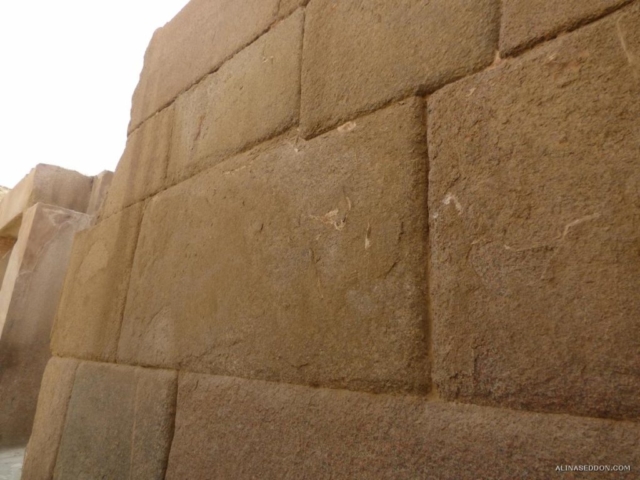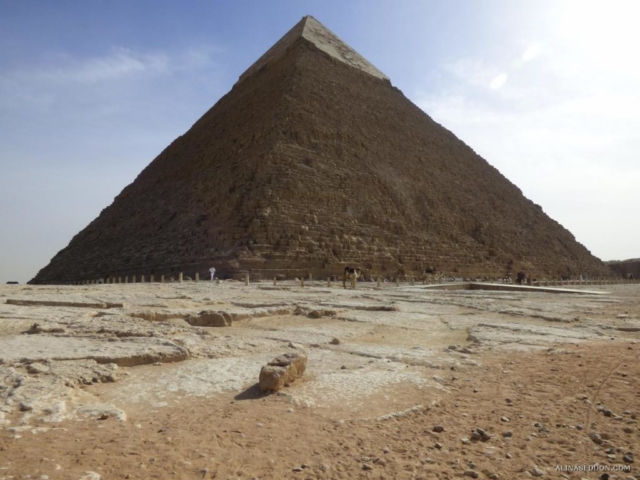
Have you ever dreamed of exploring the pyramids of Egypt? If so, enter here, wander through the chambers and passageways of the Great Pyramid, and learn about the pharaohs for whom these monumental tombs were built.
Cairo, the Jewel of the Orient, the City of the Thousand Minarets, and the Melting Pot of Ancient and Modern Egyptian Civilizations. Cairo-the Triumphant City-is the glorious capital of Egypt, the cradle of civilization and the beacon of religion. It is the largest city in the Middle East and Africa and lies at the centre of all routes leading to, and from the three continents: Asia, Africa and Europe.
Pyramids, permanent structures built by the people of some ancient civilizations, found mainly in Egypt, Guatemala, Honduras, Mexico, and Peru. The Egyptian pyramids are pyramidal in form, with four triangular sides that meet at a point at the top; the New World pyramids are four- sided, flat-topped polyhedrons. Because both the Egyptian and the American structures are called pyramids, many people have erroneously assumed that the Egyptians influenced the rise of civilization in the New World. The Egyptian pyramids were built from about 2700 BC to about 1000 BC; in the Americas, mound construction continued from 1200 BC until the Spanish conquest in AD
1519.The Egyptian pyramids differ from the American in their shape but have some similarity in their use. The Egyptian pyramids served as royal tombs, and recent excavations increasingly indicate that tombs in the Americas were sometimes incorporated into pyramids as well. The American pyramids were also used for military defense and served as platforms for temples and palaces; they are called temple mounds or platform mounds by archaeologists.
Greater Cairo extends on the banks of the River Nile to the south of its delta. Here the Nile divides into its two distributaries: Rosetta and Damietta. It is the city where past and present meet. On its east side stands the evidence of 2000 years of Islamic, Coptic, and Jewish culture still flourishing to this day. On its west side lies the Ancient Egyptian city of Memphis (Giza), the renowned capital of the Old Kingdom and the site of the Pyramids, the only wonder surviving of the Seven Wonders of the World. Indeed, a journey through Cairo is a journey through time… A journey through the history of an immortal civilization.
It is the one and only Wonder which does not require a description by early historians and poets. It is the one and only Wonder that does not need speculations concerning its appearance, size, and shape. It is the oldest, yet it is the only surviving of the Seven Ancient Wonders. It is the Great Pyramid of Giza. At the city of Giza, a necropolis of ancient Memphis, and today part of Greater Cairo, Egypt.
Man fears Time, yet Time fears the Pyramids The outstanding group of pyramids in Egypt is at Giza, near Cairo. The largest, the Great Pyramid, was built as the tomb of the Pharaoh Khufu and is one of the Seven Wonders of the World. When built, the Great Pyramid measured 147 m (481 ft) high with a square base measuring 230 m (756 ft) on each side. The remains of about 70 pyramids may still be seen in Egypt and the Sudan. The prototype of the true pyramid in Egypt was the step pyramid, so called because its successive layers of stone suggest a series of enormous steps. The most famous and best preserved of the step pyramids is that at aqqarah, near Cairo, built about 2700 BC.
The New World pyramids were arranged around a ceremonial plaza. The earliest complex, built about 1200 BC, is at the Olmec site of La Venta in the state of Tabasco in southeastern Mexico. Presumably, the later ceremonial centers in central Mexico, the Mayan region of the Yucatan Peninsula, Guatemala, Honduras, and the Andean region of Peru were based on the Olmec plan. The largest mounds in the New World include the Pyramid of Quetzalcoatl at Cholula outside Puebla, Mexico; the Pyramid of the Sun in Teotihuacan, near Mexico City.
The History
The kings of the early dynasties had tombs at Abydos and aqqarah built in imitation of palaces or shrines. From these tombs have come large amounts of pottery, stonework, and ivory or bone carving that attest to a high level of development in Early Dynastic Egypt. The Egyptian language, written in hieroglyphics, or picture writing, was in its first stages of evolution. In the 3rd Dynasty the architect Imhotep built for Zoser (reigned about 2737-2717 BC) a complex at aqqarah, the burial ground near the capital of Memphis, that included a stepped pyramid of stone and a group of shrines and related buildings. Designed to protect the remains of the king, the great Step Pyramid is the oldest monumental architecture preserved; it also illustrates one of the phases toward the development of the true pyramid.
Pyramids are formed by connecting every point of a plane polygon (the base) to a point not on that plane (the tip) shows a triangular pyramid (three-sided base), while another look illustrates a pentagonal pyramid (five- sided base). Yet another look depicts the solid between the base and a plane parallel to the base, called the frustum of a pyramid. And finally, a truncated pyramid, the solid between the base and a plane cutting all lateral edges.
The architecture of the Old Kingdom the designation used by historians for the 3rd through the 6th dynasties can be described as monumental in the sense that native limestone and granite were used for the construction of large-scale buildings and tombs. The pyramid complex at Giza where the kings of the 4th Dynasty were buried illustrates the ability of Egyptian architects to construct monuments that remain wonders of the world.
The temples and tombs, built of stone and constructed for eternity, provide most of the available information on the customs and living conditions of the ancient were made to be included in the tomb to serve the spirit in the next life. Sculpture in relief served two important purposes: On the walls of temples it glorified the king; in the tombs it provided the spirit with the things it would need through eternity. The chambered superstructures of private tombs were usually decorated with scenes of the occupant enjoying and supervising those activities in which he took part in life. The method of representing the human figure in two dimensions, either carved in relief or painted, was again dictated by the desire to preserve the essence of what was shown. As a result, the typical depiction combines the head and lower body as seen from the side, with the eye and upper torso as seen from the front. The most understandable view of each part was used to create a complete image.
The Pyramids
Pyramids, their construction and utilities baffled scientists and archaeologists for centuries. What we do know, is that the Great Pyramid at Giza is not simply a super tomb for a great Pharaoh-it is much more-It is by far the biggest building constructed by man. Although it was a tremendous height when constructed, it has been surpassed many times since in the modern world.
Pyramid of Khufu
Contrary to the common belief, only the Great Pyramid of Khufu (Cheops) rather than all three Great Pyramids is on top of the list of Wonders. The monument was built by the Egyptian pharaoh Khufu of the Fourth Dynasty around the year BC 2560 to serve as a tomb when he dies. The tradition of pyramid building started in Ancient Egypt as a sophistication of the idea of a mastaba or “platform” covering the royal tomb. Later, several stacked mastabas were used. Early pyramids, such as the Step Pyramid of King Zoser (Djoser) at Saqqara by the famous Egyptian architect, Imhotep, illustrate this connection.
Throughout their history, the pyramids of Giza have stimulated human imagination. They were referred to as “The Granaries of Joseph” and “The Mountains of Pharaoh”. When Napoleon invaded Egypt in 1798, he expressed his surprise at the workmanship, genius of the craftsmen through his famous quote: “Soldats! Du haute de ces Pyramides, 40 sihcles nous contemplent”. (Soldiers! From the top of these Pyramids, 40 centuries are looking at us)
Who & How the Pyramids were Built
The pyramids of Egypt were built as a burial place for the pharaoh god-kings. Egyptians believed the pharaohs held the key to the after life for everyone and the pyramids show this strong belief in life after death. The first pyramid to be built was started around 2600 BC. and was for the pharaoh Zoser. This pyramid does not compare with others built later on. It was constructed of steps of small, square stones and surrounded by the beautiful white limestone temples. These temples were used by priests to worship the dead pharaohs.
Building a pyramid took many years and was a public works project. Thousands of Egyptians people worked with architects when they were able to leave their farms because of the season. The most impressive pyramid, that of Cheops (or Khufu), took 100,00 people working over a twenty year period. Built along the Nile, the Great Pyramids are located in Giza.
There are many theories about how the pyramids were built. Some are very unbelievable and others are very possible. One of the most odd and outrageous theories it that aliens built the pyramids. This is a completely dumb idea, since we have proof that the Ancient Egyptians built the pyramids. So, therefore, credit should be given were it is deserved. Then, there are many theories about how the Egyptians built the pyramids.
One theory is that they built one large ramp. This was quickly ruled out in that it would have to be a mile long in order for the slant of it to be somewhat do-able. The ramp would then use more material than the pyramid itself would. Now that would not be logical at all, so this theory was quickly ruled out by leading researches in the field.
Another theory is that there was a singular ramp spiraling around the pyramid. This will clearly not work because in order for the ramp to extend from the bottom to the top, the way the ramp would be, you wouldn’t be able to cover all of the area and you would have a rather lacy pyramid. Also the angles would we so sharp that you wouldn’t have been able to move two tons blocks around jolting corners.
One rather well known theory as to how the pyramids were built is that of Mark Lehnerws. Lehner works at the University of Chicago’s Oriental Institute. In 1989 Lehner and his friend Hawass uncovered remains of a bakery near the site of the great pyramid. Lehner has spent much of the last 13 years excavating at the site of the Great Pyramid. At the time of the discovery of the bakery, Lehner had let loose a team of diggers on a field covered with garbage. Lehnerws theory, that is liked by many people, is the theory of Tafla. Tafla is a clay that is very strong when it is dried but it is easily destroyed by the swing of a pick ax. But, when Tafla is wet it is very slippery and then you can easily move the 2 ton blocks. So if you had a ramp, you could make the ramp out Tafla, you and a big crew could move the 2 ton blocks up the side of the pyramid.
This the most logical theory with one clause, it still doesn’t cover enough of the pyramids area. We believe that there were four ramps spiraling upward, each starting from one of the four corners. All other theories we have seen have been unproved in some way or another. No one really knows for a fact how the pyramids were built, they can just make practical assumptions. Lehnerws theory has an explanation for everything and has been proven that it can work. Obviously there is no way to determine that it is true.
There are many different creation stories spanning over a period of three thousand years. As the Egyptian culture and civilization grew and changed so did the gods, goddess, and creation stories. Some creation stories contradict each other. In every time period, Ra is one of the most important of the gods. The connection of human beings to the sun god, Ra, is through the pharaoh. The pharaoh is said to be the physical and symbolic son of the sun god Ra. As pharaohs changed so did the aspects of gods, goddesses and creation stories. Examples of creation stories follow:
In a very early creation story, Ptah was the creator of Ra the sun god. Ptah’s creation started as thought and then became word and finally became flesh. Ptah was the creator of everything. Ptah even created the images of the gods for people to worship. A different version of the creation story is as follows. At the beginning of time, before the earth, sky, gods, or men had been created, the sun god lived alone in the watery mass of Nun which filled the universe, The sun god created by himself two other gods who he spat out of his mouth, the god Shu who represents air, and the goddess Tefnut, who represents moisture. Shu and Tefnut then had two children, Geb, the earth god and Nut, the goddess of the sky, who had four children. These were Osiris and his consort Isis, and Seth and his consort Nephthys. These nine gods together made up the Great Ennead of Heliopolis, the most important group of gods in the Egyptian Pantheon.
An additional creation story states that in the beginning Geb and Nut were one. Then Shu split them apart. Geb became the earth and Nut became the sky. Ra is reborn every morning. Human beings were created differently than gods and goddesses. The gods and goddesses wept and from their tears human beings sprang. Another story says that the sun ages over the course of the day. Every morning the sun is a newborn baby. The sun grows older with every passing minute. By noon the sun is a full grown adult. In the afternoon the sun gets older and at sunset, the sun dies to be born again in the new morning. At the death of the sun, as night came, the sun was said to travel in the underworld through the night before rebirth in the morning.
It is important to know that the many divinities of ancient Egypt and the myths about them were not just important to the Egyptians of that time but also had great influences on the mythologies of many later civilizations. During the 1300’s B.C, the pharaoh Amenhotep IV chose Aton as the only god of Egypt. Aton had been a little-known god worshipped in Thebes.
Amenhotep was so devoted to the worship of Aton that he changed his own name to Akhenaton. The Egyptians stopped worshiping Aton after Akhenaton died. However, some scholars believe the worship of this one divinity lingered among the people of Israel, who had settled in Egypt, and became an important part of the religion that was developed by their leader Moses. These scholars have suggested that the Jewish and Christian belief in one God may come from the cult of Aton.
You can make your own decisions in deciding who you think built the pyramids or how you think they did it just try to think things through completely and look for any possible setbacks.
Who could have organised such a project: how were the people fed, considering the whole project took place in a vast desert: where did get the timber; how did they join them so finely that a piece of baking foil can’t be inserted between the stones? The questions keep on coming. Eric Von Daniken has written books (such as Chariot of the Gods) suggesting that this was too great a feat for humans alone and that they must have had help from outer space.
Today, the Great Pyramid is enclosed, together with the other pyramids and the Sphinx, in the touristic region of the Giza Plateau. Also in the area is the museum housing the mysterious Sun Boat, only discovered in 1954 near the south side of the pyramid. The boat is believed to have been used to carry the body of Khufu in his last journey on earth before being buried inside the pyramid. It may also serve him as a means of transportation in his afterlife journey according to Ancient Egyptian beliefs.
The Great Pyramid is the finest of the original eighty or so that were built in Egypt, thirty of which still stand today. Apart from its size, it is remarkable in many other ways. For example, the construction of such an enormous building 2000 years ago almost defies imagination. We still do not know how such an edifice was built, taking as it must have done, many years, hundreds of thousands of men, millions of logs (for rollers to move the stones) and an enormous navy of barges and other transport to bring the stone from as far as 500 miles away. The more we discover about the Great Pyramid, the more baffling it seems.
When it was built, the Great pyramid was 145.75 m (481 ft) high. Over the years, it lost 10 m (30 ft) off its top. It ranked as the tallest structure on Earth for more than 43 centuries, only to be surpassed in height in the nineteenth century AD. It was covered with a casing of stones to smooth its surface (some of the casing can still be seen near the top of Khefre’s pyramid). The sloping angle of its sides is 54 degrees 54 minutes. Each side is carefully oriented with one of the cardinal points of the compass, that is, north, south, east, and west. The horizontal cross section of the pyramid is square at any level, with each side measuring 229 m in length. The maximum error between side lengths is astonishingly less than 0.1%.
The structure consists of more than 2 million blocks of stone, each weighing several tons. It has been suggested that there are enough blocks in the three pyramids to build a 3 m (10 ft) high 0.3 m (1 ft) thick wall around France. The area covered by the Great pyramid can accommodate St Peter’s in Rome, the cathedrals of Florence and Milan, and Westminster and St Paul’s in London combined.
On the north face, is the pyramid’s entrance. A number of corridors, galleries, and escape shafts either lead to the King’s burial chamber, or were intended to serve other functions. The King’s chamber is located at the heart of the pyramid, only accessible through the Great Gallery and an ascending corridor.
The King’s sarcophagus is made of red granite, as are the interior walls of the King’s Chamber. Most impressive is the sharp-edged stone over the doorway which is over 3 m (10 ft) long, 2.4 m (8 feet) high and 1.3 m (4 ft) thick. All of the interior stones fit so well, a card won’t fit between them. The sarcophagus is oriented in accordance with the compass directions, and is only about 1 cm smaller in dimensions than the chamber entrance. It might have been introduced as the structure was progressing.
New theories concerning the origin and purpose of the Pyramids of Giza have been proposed… Astronomic observatories… Places of cult worship… Geometric structures constructed by a long-gone civilization… Even extraterrestrial-related theories have been proposed with little evidence in support… The overwhelming scientific and historic evidence still supports the conclusion that, like many smaller pyramids in the region, the Great Pyramids were built by the great Ancient Egyptian civilization off the West bank of the Nile as tombs for their magnificent Kings… Tombs where Khufu, Khefre, and Menkaure could start their mystic journey to the afterlife.
The Perfect Structure

Nothing about the Great Pyramid is accidental, its position is the exact centre of the earth’s landmass. The north-south at which is 31 degree 9? east of Greenwich is the longest meridian and the east-west axis, 29 degree 58? 51? north is the longest land parallel. The weight of the Great Pyramid is exactly one thousand trillionth of the weight of the Earth and enables us to calculate the distance of the earth from the sun.
Be this as it may, there are uncannier facts. For one, the Great Pyramid is aligned so exactly to the magnetic north that it defied modern measuring systems. Until very recently, it was thought that the pyramid was slightly off this north-south axis, but with the development of more sophisticated measuring methods, it was realised that the ancient Egyptians had got it right and that we had been wrong all these years! The Pyramid is constructed with very special dimensions and proportions. The Egyptians were the first to discover geometric symmetry-the scale of proportions that rules the harmony of nature’. So basic are the 3-4-5 unit relationships found in the pyramids that scientists engraved the same triangular figures on a plaque sent into space as a means of communication with life on other planets.
A story goes back to the early 1930s when Antoine Bovis claimed to have rediscovered thepower of the pyramid’ shape to affect matte. Bovis, a Frenchman, was on holiday in Egypt in the 1930s and was amazed to find that small animals that had lost their way and starved to death in the Great Pyramid had not decomposed. They had simply dehydrated and mummified. As he was keen rediesthetist, he tried to reconstruct this extraordinary observation when he returned to Paris, for he felt sure there must be some strange forces at work. He built a pyramid to exactly the same proportions as those of the Great Pyramid and found he could reproduce the mummification process. He then used this method for preserving fruit and vegetables. Amazed by all this Bovis tried to convince people but they wrote him off as crank, partly because he was also a rediesthetist.
Bill Kerrell and Kathy Goggin-two pyramidologists, have conducted numerous experiments, with remarkable results. They found that they could after the taste of good (for the better) by placing it under a pyramidal structure. This makes coffee less bitter, improves the taste of wine, lowers avidity of fruit juices, improves the taste of frozen foods and a host of other things.
Not only can plants and organic matter be influenced by pyramid-shaped structure-but so can human beings.
Sophisticated biofeed-back equipment shows that a trained meditator (or anyone trained to control his brainwave pattern) is influenced by the lowering of an open-structured pyramid over his head. Experiments carried out by Kerrell and Goggin used experienced meditators who were wired up to an electroencephalograph machine, which measures the patterns of waves produced by the brain. The subjects were blindfolded and the baseline of the brain waves recorded.
Then, unknown to them, a pyramid was lowered over them. After about 30-45 seconds the alpha the theta waves in the brain increased in frequency and were more than double the normal amplitude. Sometimes the alpha activity (the brainwave so sought after by the bio feedback experts) was so great that it shot off the top of the recording scale. The subjects themselves noticed subjective difference when they were under the pyramid. Most frequently reported sensations were: a sense of weightlessness, tingling, warmth, tranquillity and relaxation, dreams, graphic visions and time distortions. A few subjects experienced even more extraordinary phenomena including clairaudient experiences.
Other experiments have shown that people sleeping with a pyramid over their heads need fewer hours sleep and that they awake considerably more refreshed. Kerrell and Goggin have carried out pyramid tests with children who they reasoned, would be far more reliable witnesses than adults who are conditioned to reject or at least be sceptical of new phenomena.
They took children (who knew nothing about pyramids, fairly obviously) and on a very casual basis gave them the opportunity of going on or out of one place on the ground in their own back gardens.
When the children were inside they were asked very casually if they’d like to stay in there and what if anything it felt like. Only five of the eighteen children tested, noticed no change at all. Many felt `warm all over’, body tingling and other sensations. One hyperactive child in particular was very much happier under the pyramid and was able to stay calm and read school-books for longer than ever before.
How does it work?
Nobody knows as yet how likely it is that certain electromagnetic waves are concentrated and condensed by the particular configuration of a pyramid. Conventional magnetism may be involved in the pyramid’s working too because a Gauss meter, placed at the centre of even a non-megnetisable pyramid (one made of card for instance), shows a positive reading which increases in strength as the pyramid is brought into north-south alignment.
Greater readings were produced with metal pyramids, but even this is strange because classical magnetic theory would have it that the magnetic materials of the frame should shield the interior of the pyramid from the magnetic forces. The pyramid shape itself then seems to attract more than the normal of the earth’s magnetic forces.
But magnetism is not the only explanation of pyramid power because similar magnetic fields do not produce the same effects as those produced under a pyramid. This seems to confirm that pyramids have something to do with the balance of negative and positive ions in the air, as pyramids seems to produce some of the beneficial effects found with negative iron therapy.
It’ll probably be decades before pyramid power is really understood, but there certainly seems to be enough evidence to make further study Worth while. It’s quite likely that advances in the near future will come from industry rather than medicine. In the US, plant growers have already reported increases of 150 per cent in growth rates under pyramids and there are also pyramid-shaped schools, warehouses and recreation areas into existence.
An Indian Interpretation
According to an expert on Cosmic Energy, who has been studying the Pyramidical effect for quite sometime, states-Peer means aged person and peeri-old age is a peer meaning pain or disease. Any and every person has to undergo old age. Then all the energy is depleted, diseases take hold of you. When you are in the midst. What can you do to help yourself pass this time of life? Some take better food, a little exercise and some tonics. This no doubt helps.
In addition to the body health one needs spiritual health. This can be obtained through meditation. Meditation or Yoga means to connect or to communicate. Even in the day to day life, is y if you are connected to a powerful person, you felt protected. No body would thus like to pick a dispute with you.
The most powerful source of Physical, mental and spiritual energy is The God-The Supreme Soul. If one can Communicate with the Supreme, he can energize himself. Thus Pyramid -a Sanskrit word-Peera- Madhya. All the Pyramids The Science or Philosophy of Pyramids is based on the Yoga, which is Synonymous-The God. The religion of The Supreme. Our ancient spiritualists ie the yogis or the super intellectuals used to pass a lot of their time, specially from 3.30 to 6.30 in the morning meditating with the Supreme. Incidentally this is time selected in every religion for prayers.
This is a very pure. calm and quiet time and helps in meditation. Just as a child is more secure, can enjoy a better care free as well as a longer life in the protection of his parents, similarly. the super intellectuals or yogis used to meditate with The Supreme. To get these benefits of protection, guidance and longer life.
While meditating our Yogis used to strike a particular pose sitting cross legged, back straight up, hands on the knees, with a choti up straight-the choti used to work as an antenna. When a yogi used to meditate with the Supreme… the rays and vibrations of shakti (cosmic energy) were received through the antena into the body. And that energy received used to get stored up in the human body. Since the posture of the body if you notice is locked, so the energy received can’t escape. This posture forms a Pyramid.
However every body was not that intelligent or capable of doing so. So to help those who were not so competent but wished to meditate, they built Pyramids. These pyramid structures are the remanant structures of those times. All the Pyramids, temples and most of the places meant for prayer- are built on the principal of this pose adopted by the yogis, with little variation according to their knowledge and need of the times.
The pyramids of Ancient Egypt, constructed some 5,000 years ago, remain one of the greatest wonders in the modern world. Through an intricate system of mathematical measurements, it was found that the Great Pyramid of Cheops had foretold major events like the Exodus, Crucifixion, and the outburst of WWII.. And since then, there have been many reports of its strange powers extending far beyond Egypt & centering on all pyramidal shapes, whether cast in cardboard, metal or plastic.
Contrary to the general belief, it is now presumed, that, the Pyramids were actually places where one could concentrate and reinforce his energies. When ever you go to these places you will feel a lot of pure energy and vibrations of peace because of the pure cosmic energy trapped in these places.
The utility versions of pyramid are kept on actual North, South axis. In a globe North is on the top and south on the bottom. That means perfectly upright and straight perpendicularly. On the earth straight horizental. This means it creates a perfect cross.
The top of the Pyramid is Zero, God is Zero. That means by this arrangement one’s soul-your Zero is trying to communicate with The Supreme Zero. Thus while meditating since we are on the same wave length-Zero-we are connected to the Supreme Zero.
In this world nothing is constant. Not even The Time. This universe is based on cyclic movements. If it is round, a cycle, then all the four sides of the Pyramid should have been equal. Yes. they were equal. The difference is due to the fact that when about 2500 years back, this world split into its present five continents, the earth below the Pyramids got stretched. This stretching effect also caused contractions at other places. This stretching and contracting effect caused different continents, lakes. mountains etc. to form. It also changed the earth’s axis.
The deviation in the earth is axis was to the extent of 23.5o. Because of this deviation the revolution of the earth around the sun is not a perfect circle. It wobbles and hence the number of days in a year is 365 days. Previously when the axis of the earth was straight upright, the orbit of the earth was a perfect circle. Then it used to take the earth exactly 360 days to go round the Sun i.e. a year was of 360 days.
A circle has 360 degrees. The earth used to move by one degree round the sun and completed the circle in 360 days. The year of 360 days was thus divided into 10 months of 36 days, as is evident from the names of the months. January, the word has been taken from the Janani i.e. the beginning of the year. September is from Sapt ie seven, October is from asht ie Eight, November is from Navam ie Nine and the last month December is from Deca or Dahaca ie Ten. This was later changed to 12 months of 30 days.
The Cosmic – Pyramid Power
Water that has been placed under a pyramid loses its chlorine taste and if one experiment is to be believed might actually have curative properties. A none-year-old girl had a number of mosquito bites. The experimenters rubbed one of the bites with tap water and another with pyramid water. The girl immediately reported pyramid water had stopped the itching.
The experiment was then repeated with the girl unable to see which water was being used and she still obtained repeated relief from the ordinary tap water. Clearly this needs repeating and further research is essential before nay medical claims for pyramid water can be made.
Some researchers claim that pyramids put a brake on the ageing process and some lowly forms of life have been positively affected by pyramids. However, in spite of the astounding finding that skin cells from a 3,000- year-old Egyptian mummy were still capable of life, any claims that pyramids prolong human life must be treated cautiously until more research has been carried out. Anecdotal reports suggest that women who have been sleeping under a pyramid for four to six weeks noticed that their menstrual cycles were altered. Many said that they were free from cramps and the duration was also reduced in many of them.
Resurgence of Pyramid Power
Pyramid power resurged in the sixties, when pyramidal shapes were explored for physio & psychological alchemy. Sleeping under a pyramid tent was reputed to cure insomnia, calm hyperactive children, get rid of menstrual cramps, and revive a flagging sex drive. In California, there was even a craze for hat-sized pyramids that supposedly recharged the brain!
Biologist Lyall Watson, author of Supernature, suggested the shape of the Great Pyramid acted as a focus for some form of energy, and many people do believe that a few minutes spent sitting in a pyramidal structure, to mediate or simply rest & think things out, inspires a peace & clarity that alleviate stress while recharging one’s batteries… Other scientists have even found that pyramids exert strange influence over electrical equipment, as did the team attempting to x-ray the Pyramid of Chephren, Successor to Khufu, hoping to locate a hidden burial chamber. They had to abandon the project within a year as their equipment went hay-wire in the vicinity of the structure producing different pictures of the same are at different times, creating more puzzles than it solved.
One piece of empirical evidence recently surrendered by the Great Pyramid appears to have, as one might expect, universal application: A pyramidal shape with the previous ratios of the Great Pyramid, and centered on the true north-south axis, seems to reflect, generate, accumulate or in some manner make available certain energy fields.
Pyramid models varying in size from a few inches to a number of feet have been constructed & used to house a variety of both animate & inanimate objects, including humans, with the construction material, usually, cardboard & wood for small pyramids, and wood, fiber-glass, glass & plastic sheeting in the case of larger ones, appearing to have little bearings on the results, but the presence of metal in or around the pyramid seems to both inhibit & enhance the electromagnetic properties of the energy spectrum, depending upon its placement & relative amount.
The time-frame regulating results is plotted on a trial-and-error basis. For example, food commodities have been left in pyramids for several weeks, individuals remained inside larger pyramids for a few minutes to a number of hours.
The excitement over homemade pyramids was ignited in 1970 by the publication of Psychic Discoveries Behind The Iron Curtain, by Sheila Ostrander & Lynn Schroeder, where, in the section on Czechoslovakian research, they recounted coming across various small pyramids as razor- blade sharpeners. Their investigations into pyramids even led them to a Monsieur Bovis who had, several years earlier, built a 2 1/2 ft high pyramid & placed a dead cat directly under its apex but about one-third the distance from the base to the apex, as that’s where the Pharoah’s Chamber is traditionally located. Likewise, the cat mummified.
After experiments with several small models of Cheop’s Pyramid, Drbal reported to Ostrander & Schroeder that: “There is a relationship between the shape & space inside the pyramid & the physical, chemical & biological processes going on inside that space. By using suitable forms & shapes, we should surely be able to make such processes occur faster, or delay them.”
Turning his attention to metal, Drbal then toyed with the idea that a razor blade, whose edges have a crystal structure that dulls with repeated use, could be returned to its original shape & sharpness when places in the heightened energy field of a pyramid. It worked, to the tune of 50-200 shaves from a single blade!
That was in the 1950s in cardboard & Styrofoam. Close to half-a- century of pyramidal advances later, focusing the sheer heights and depths of pyramid power, we find:
Tarnished jewellery & coins are polished by the energy forces working within a pyramid.
Polluted water is purified over several days, and water further treated so seems to aid both digestion & the healing of wounds. In fact, using water treated in a pyramid as a face lotion for five weeks, Mrs. Pettit found her friends wondering about her “youthful appearance”!
Milk remains fresh for days on end when stored in a pyramid and, eventually turns into yogurt whereas milk placed in a identical container outside the pyramid sours. A French firms has even patented a pyramidal-shaped container for making yogurt and an Italian milk concern, pyramidal-shaped cartons for milk.
© AIDEC World. All rights reserved.

